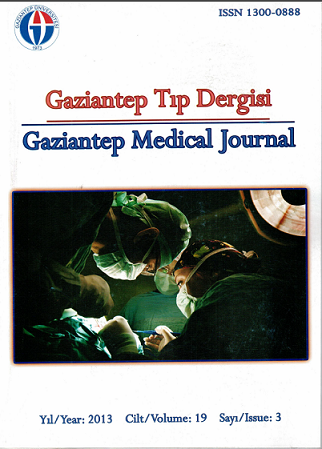Knowledge, attitude and practice of female genital mutilation among women in Jigjiga Town, Eastern Ethiopia
DOI:
https://doi.org/10.5455/GMJ-30-2013-157Keywords:
Attitude, female genital mutilation, knowledge, practice, EthiopiaAbstract
Female genital mutilation/cutting (FGM/C) is worldwide problem and affecting almost all ethnic groups. For many years its ill health effect received little public attention. Like many other developing countries, FGC is a widely practiced by Ethiopian women and it is one major cause for high maternal mortality in the country. In this study, we aimed to assess knowledge, attitude and practice towards FGM/C among women age 15- 49 years in Jigjiga town, Ethiopia. Community based cross-sectional study was conducted in selected kebeles of Somali regional state, Jigjiga town, Ethiopia. Socio-demographic characteristics, knowledge about the ill health effect of FGM, women attitude towards the practice and other information was collected from 323 systematically selected women by using a pre-tested semi-structured questionnaire. A total of 323 women were included in the study of which 138 (43%) of them were within the age group 20-24 years. Majority [230 (71.2%)] were from Somali ethnic group and 271 (84%) were Muslims. Nearly one third 98 (30.3%) were house wife and about quarter 81 (25%) were illiterate. The commonest 139 (47.8%) age of their circumcision was between 6-14 years of age. Mothers 196 (67.4%) and trained traditional birth attendants 154 (53%) were the commonest decision makers for this practice to be performed. Nearly half 168 (52%) of the women reported the practice should be stopped whilst 117 (36.2%) women supported that FGC should be maintained in the society. Majority 179 (83%) of the women had the intention of exposing their future daughters to the mildest form of Sunni type FGC practices. The prevalence of FGC with its different forms was found to be high among the study participants. Infibulations was the most common FGC types among the circumcised participants. There is a trend of shifting FGC practice from its severe (infibulations) form to milder (Sunni) form in the community at present.
Metrics
References
WHO. Female Genital Mutilation. An overview. Geneva 1998. https://apps.who.int/dsa/cat98/fgmbook.htm Accessed on 12 September 2013.
UNFPA. Global Consultation on Female Genital Mutilation/Cutting, Technical Report, 2009. http://www.unfpa.org/public/home/publications/pid/2188 Accessed on 12 September 2013.
WHO. An update on WHO’s work on female genital mutilation (FGM). Progress report. 2011. http://whqlibdoc.who.int/hq/2011/WHO_RHR_11.18_eng.pdf Accessed on 12 September 2013.
Berg RC, Denison E. Interventions to reduce the prevalence of female genital mutilation/cutting in African countries. Campbell Systematic Reviews 2012:9. www.campbellcollaboration.org/lib/download/2101/ Accessed on 12 September 2013.
Abate A, Kifle M, Nebreed F. Prevalence of female genital mutilation and attitude of mothers towards it in serbo town. Ethiop J Health Sci 2002;12(2):59-68.
Population Reference Bureau. Female Genital Mutilation/Cutting: Data and Trends, Update 2010. 2010. http://www.prb.org/pdf10/fgm-wallchart2010.pdf Accessed on 12 September 2013.
Assefa D, Wassie E, Getahun M, Berhaneselassie M, Melaku A. Harmful Traditional Practices For the Ethiopian Health Center Team. 2005. http://www.cartercenter.org/resources/pdfs/health/ephti/library/modules/Degree/Mod_HTP_final.pdf Accessed on 12 September 2013.
UNICEF. Changing a harmful social convention: Female genital mutilation/cutting. 2005. http://www.polisci.ucsd.edu/~gmackie/documents/ChangingHarmfulSocialConvention.pdf Accessed on 12 September 2013.
Spadacini B, Nichols P. Campaigning against female genital mutilation in Ethiopia using popular education. Gend Dev 1998;6(2):44-52.
Bayoudh F, Barrak S, Ben Fredj N, Allani R, Hamdi M. Study of a custom in Somalia: the circumcision of girls. Med Trop (Mars) 1995;55(3):238-42.
Webb E. Female genital mutilation. Cultural knowledge is the key to understanding. BMJ 1995;311(7012):1088.
Downloads
Published
How to Cite
Issue
Section
License
Copyright (c) 2023 European Journal of Therapeutics

This work is licensed under a Creative Commons Attribution-NonCommercial 4.0 International License.
The content of this journal is licensed under a Creative Commons Attribution-NonCommercial 4.0 International License.


















